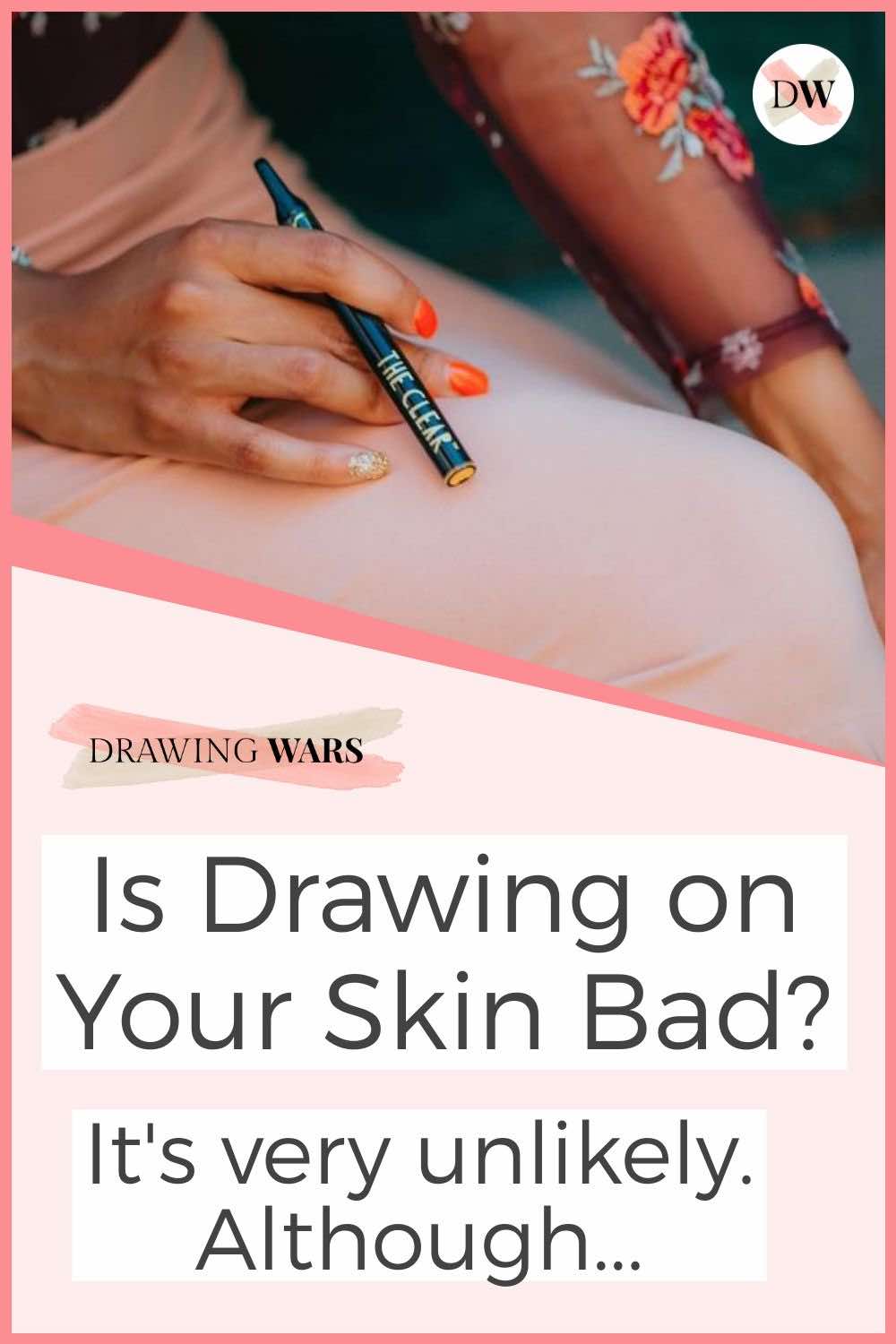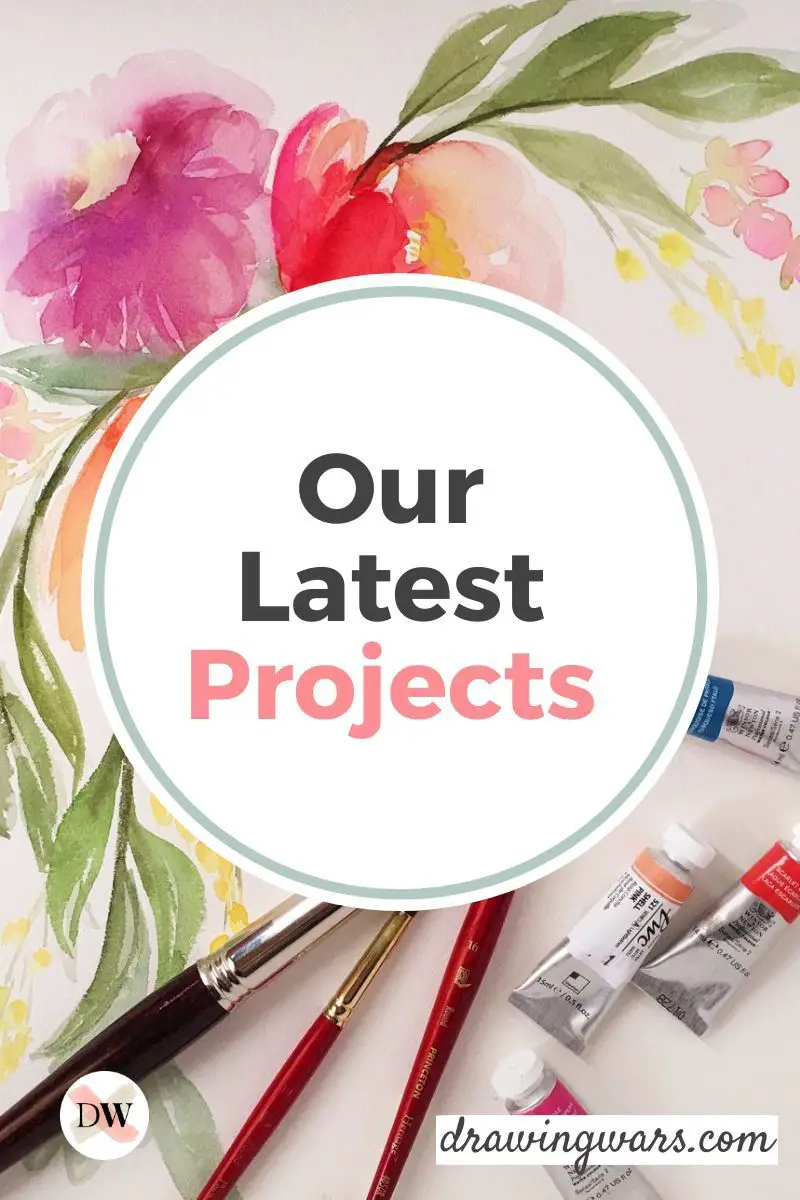

Introduction
Do you love using your skin as a canvas? Tattoos are one thing, but using art supplies on your skin is another. Whether they’re paints or drawing materials like pencils or crayons, not everything is suitable for using on the skin. However, there are some art supplies dedicated solely to be used on the skin. But what if you use normal drawing supplies on the skin - what will be the side effects?
Drawing on the skin can cause solvents from the product to absorb into the blood stream. An ACMI label indicates non-toxicity but it doesn’t make the art product safe for using on the skin. Both organic and inorganic pigments can contain toxic chemicals toxic to the skin, however ‘hues’ are void of metallic content.
What material should I use to draw on my skin?
Make sure to choose products wisely before creating art on your skin.

Almost all drawing media are safe to use on the skin, although they may create other issues such as inhaling dust, ingestion, etc. Drawing and painting media that consist of the following substituents should be avoided at all costs:
- Lead (White lead can be present even in non-toxic pigments)
- Cadmium
- Xylene
To learn more about drawing media and their safety, check out these verified facts from Poison.org .
PRO-TIP
pigment vs hue
If you have a product that has 'hue' written on it, it's safe to use. If it's an original pigment instead of hue, it would contain the metal directly which could be harmful to the skin.
What are the skin safety hazards for dry drawing media?
Remember to take these precautions with dry drawing media!

At the basic level of drawing, we have graphite or lead pencils. Note that although some pencils contain lead, it’s in a very low amount, so it’s not toxic to the skin. However, drawing on the skin with pencils is really difficult because the marks just don’t seem to happen.
- Graphite pencils: They are harmless but even with the bold grades, it’s hard to draw on the skin.
- Colored pencils: Colored pencils can be of many types. Some are wax based and lay down more texture, whereas others are very basic and don’t contain much pigment.
- Charcoal: Yes, you can use charcoal but once again, it’s all about the dust. Inhaling charcoal dust becomes more probable if you have the habit of blowing on your drawings. There are lesser chances of creating dust with charcoal pencils, so you should always opt for those instead of chunks.
- Soft/dry pastels and chalk: Soft pastels and chalk are non-toxic. However, they can create a lot of dust, so if you have asthma or any allergy triggered by dust, better stay away from this drawing medium! Inhalation over time can cause diseases as severe as lung cancer.
- Crayons: Crayons are non-toxic as well, however not all of them are edible. So never chew on your crayons while you’re working with them! Note that some crayon-like pens have been developed for the skin, so you can use them.
- Markers: Washable and non-toxic markers designed for children can be used easily. Avoid using permanent markers as they can be hard to get off the skin, causing irritation, redness and rashes.
WARNING!
don't use fixative on skin
Fixatives should be used only on proper drawing supports like paper, wood etc. Never use it on your skin
It’s easy to make marks with soft pastels… Whether you want to draw on your skin or not, here’s a set we recommend you get.
Mungyo Square Chalk Soft Pastel (64 Pack)
These non-toxic soft pastels can be used for all types of art projects.
What are the skin safety hazards for wet drawing media?
Be mindful of the wet drawing media you're using on your skin!

Wet media include markers and pens containing ink that could have toxic elements like xylene. This substance can be found excessively in permanent markers, so it is necessary to keep these markers as far away as possible from the skin.
Avoid markers that consist of solvents, always opt for water-based markers. They can be erased easily and don’t have extra chemicals to improve the flow of the medium.
PRO-TIP
ink is typically safe
Ink from most drawing pens is safe to use on the skin. But if it isn't water-resistant, it may become hard to remove. Avoid using inks and markers that have been labeled as 'permanent'.
For drawing inks, we recommend getting this rich and vibrant pack from Winsor & Newton.
Winsor & Newton Drawing Inks (4 Pots in Rich Tones)
The rich tones from this pack of 4 inks will breathe life into all your drawings. Featuring ultramarine, purple, sunshine yellow and viridian.
What to do if you have toxic drawing material on your skin?
Thoroughly washing the skin can help prevent toxic elements from reaching the blood stream.
If an art medium (be it painting or drawing) contains toxic pigments like pure cadmium, then it’s not safe to use on the skin. In fact, it isn’t even edible. If you have accidentally used toxic drawing material on your skin, follow these steps to remove it as soon as possible:
- Immediately expose the skin under running water.
- Use a good anti-bacterial soap.
- Rinse thoroughly using a soft towel, avoid engaging your other hand so that chemical doesn’t come on it.
PRO-TIP
consult your doctor
If you develop irritation and rashes, don't hesitate to consult your doctor.
Does the ACMI Approved Product (AP) Seal mean the art product is safe to use?
An art product having the ACMI Approved Product (AP) seal means it's safe to use!
Yes, the approved product (AP) seal from ACMI means that no toxic chemicals are present in the particular product.
There are two types of labels given by ACMI:
Approved Product (AP): The approved product means that the specific art product can be used without any worries.
Cautionary Labeling (CL): The CL seal can be seen only on highly professional art material, as it can contain very toxic chemicals. Thus, you will never find it on non-toxic art products or the supplies that have been developed for children.
You can learn more about the ACMI seals here .
Conclusion
Although drawing on your skin is not harmful all the time, you must remain cautious regardless. Most of the drawing media can be harmful in other ways, such as breathing in the dust or ingesting material containing highly toxic parts and constituents. For more information, always check the label of the product you’re using. If it has AP level from ACMI, it’s safe for use but if it has CL, it definitely shouldn’t come in contact with the skin. Always consider your own health and various allergies (for instance dust) before using a certain drawing medium.
Do you want to learn more about safety in the art world? Don’t miss reading this post on the dangers of eating paint for kids and pets .
How Dangerous is it to Eat Paint? Could kids or pets die?
Is painting really as safe an activity as it is pleasurable? Could you always be sure that your kids and pets are safe around paint?

By Jimena & Iñigo
The Navarro-Rubios
My husband and I are learning how to draw and paint. We wanted to share this learning process with the world and have fun! That's why we created this blog. We'll have drawing contests every week and you'll decide who won that week! Follow along and learn with us!

Jimena & Iñigo
The Navarro-Rubios
My husband and I are learning how to draw and paint. We wanted to share this learning process with the world and have fun! That's why we created this blog. We'll have drawing contests every week and you'll decide who won that week! Follow along and learn with us!







